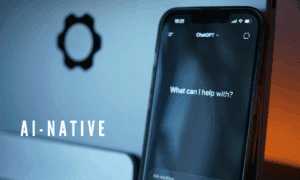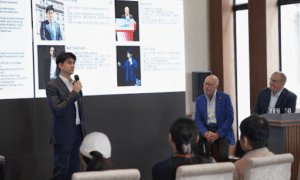As mobile technologies continue to reshape global infrastructure, the healthcare sector—particularly maternal and child health—stands at a critical junction. At the center of this transformation is Busayo Olamide Tomoh, an independent researcher based in Cleveland, Ohio, whose work is helping redefine how mobile health (mHealth), artificial intelligence (AI), and data-driven platforms can be integrated to solve one of the most pressing challenges in global public health: maternal and infant mortality.
Tomoh is a lead contributor to the January 2024 publication “Leveraging Mobile Health (mHealth) Applications for Improving Maternal and Child Health Outcomes”, featured in the Journal of Frontiers in Multidisciplinary Research. The study offers a rigorous cross-regional analysis, drawing on deployment case studies from North America, Sub-Saharan Africa, and South Asia. It evaluates how mHealth interventions—ranging from AI-enabled mobile applications to SMS alerts and wearable monitoring devices—are redefining access to care, especially in low-resource settings.

Busayo Tomoh
Globally, the stakes are high. According to the World Health Organization, approximately 287,000 women died from pregnancy-related causes in 2020, and over 5 million children under the age of five die each year, often from preventable conditions. 94% of maternal deaths occur in low- and middle-income countries, revealing systemic inequities in access to timely and quality healthcare. The need for scalable, tech-enabled health solutions has never been more urgent.
“We’re not just digitizing healthcare,” says Tomoh. “We’re reengineering access to it—especially for women in marginalized or hard-to-reach communities.”
The research is expansive in both scale and scope. It examines how mobile platforms are now supporting core interventions such as prenatal reminders, vaccination alerts, remote teleconsultations, postnatal check-ins, and AI-based risk scoring for conditions like preeclampsia and gestational diabetes. From North American hospital systems using AI to flag high-risk pregnancies to Sub-Saharan African communities leveraging SMS to track maternal visits, the study outlines the diversity—and adaptability—of mHealth models.
Tomoh emphasizes that the success of mHealth depends not on technological novelty but contextual fit. “In places like rural Nigeria or eastern India,” she explains, “a simple SMS can save a life. It can remind a mother to get vaccinated or connect her with a midwife when there’s no clinic for miles. These are low-tech interventions, but they’re yielding high-impact results.”
The paper details how smartphone penetration and mobile broadband expansion are accelerating adoption. In nations where regulatory policies align with digital investment—such as India’s Aponjon program or telehealth pilots in Ghana and Kenya—mHealth has been embedded into public health strategy. The authors urge other governments to follow suit, calling for robust public-private partnerships with telecoms, cloud providers, and community health stakeholders.
“The tech is here,” Tomoh asserts. “What we need now is political will. We need ministries of health to stop treating mHealth as a pilot project and start building it into the national digital architecture.”
A key technological innovation highlighted in the study is the integration of AI with wearable maternal health devices. These tools can monitor blood pressure, oxygen saturation, fetal movement, and other biomarkers in real time, transmitting alerts to healthcare providers when anomalies are detected. When combined with cloud-based decision-support systems, they enable early intervention, significantly reducing both maternal and neonatal risks.
But challenges remain. The research identifies core implementation barriers: digital illiteracy, gendered access to technology, unreliable infrastructure, and growing concerns over data privacy and cybersecurity. In many rural communities, mobile devices are often controlled by male family members, limiting women’s autonomy in using health apps or receiving SMS alerts.
Tomoh is clear-eyed about these obstacles. “If we’re going to collect sensitive reproductive health data on mobile devices, we better be prepared to secure it,” she warns. “Encryption, consent protocols, and decentralized storage must be built in from day one. Trust is non-negotiable.”
In North America, the conversation has shifted toward predictive analytics and personalized maternal care. AI models trained on large health datasets are now being used to assign risk scores, recommend tailored care plans, and identify health disparities among racially or economically marginalized groups. But Tomoh cautions that even in high-income settings, technology must enhance—not replace—human care.
“Technology must never replace the midwife, the nurse, or the community health worker—it must enhance their capacity,” she argues. “Smart systems don’t mean we remove people; they mean we equip people to do smarter work.”
The report also highlights the role of 5G connectivity and blockchain in the next wave of mHealth innovation. While 5G enables low-latency data transmission essential for telemedicine and remote monitoring, blockchain is increasingly proposed as a solution for secure, tamper-proof storage of maternal health records. These technologies, the study argues, will be vital in building scalable and interoperable health systems across the Global South.
Tomoh’s policy recommendations are grounded in implementation science. She calls for mHealth strategies to be embedded in national healthcare plans and funded with dedicated digital health budgets. Her emphasis is on co-designing these platforms with the very women and communities they aim to serve—ensuring usability, trust, and long-term engagement.
“User experience matters,” she says. “You’re building for mothers with varying literacy levels, in different regions, speaking different languages. Tech must meet people where they are—not the other way around.”
Her broader vision aligns with the rapidly growing “tech-for-good” movement—an interdisciplinary space where AI engineers, digital designers, and public health officials collaborate to build purpose-driven, ethical systems. But Tomoh goes further. She frames mHealth as not merely an innovation opportunity, but a moral and operational obligation for governments and global institutions.
“We are entering an age where digital health is not just about innovation—it’s about obligation,” she says. “Governments, tech companies, and health providers must come together to ensure that mobile platforms can be used not just to connect us—but to protect us.”
Tomoh’s work, which brings together collaborators from Nigeria, the United Kingdom, and the United States, reflects the international nature of both the problem and the solution. Her ability to translate field data into policy-facing strategy has made her a sought-after voice in the global digital health space. For developers, technologists, and funders, her study offers not just data, but direction.
As emerging markets leapfrog into mobile-first digital ecosystems, the opportunity to leverage technology for equity is at its peak. According to GSMA’s Mobile Gender Gap Report, only 59% of women in low- and middle-income countries own a mobile internet-enabled phone, compared to 73% of men—a gap that must be closed to ensure that mHealth is truly inclusive. Tomoh views the challenge not as a constraint, but a call to innovate smarter and fairer.
“We have a real chance here to level the playing field,” she concludes. “If we get this right, a pregnant woman in rural Ghana can have the same access to real-time prenatal care data as someone in Boston. That’s the promise of mobile health.”
In Busayo Tomoh, the tech world has found not only a researcher, but a strategist and system builder—someone whose vision transcends devices and data pipelines to embrace systems change, digital dignity, and global justice. Her work is not just a contribution to academic literature; it is a blueprint for how mobile-first, AI-enabled health systems can deliver measurable impact at scale.
As the boundaries between health, tech, and equity continue to blur, Tomoh’s message is clear: the future of maternal health is not just mobile—it is intelligent, secure, inclusive, and radically accessible.

































